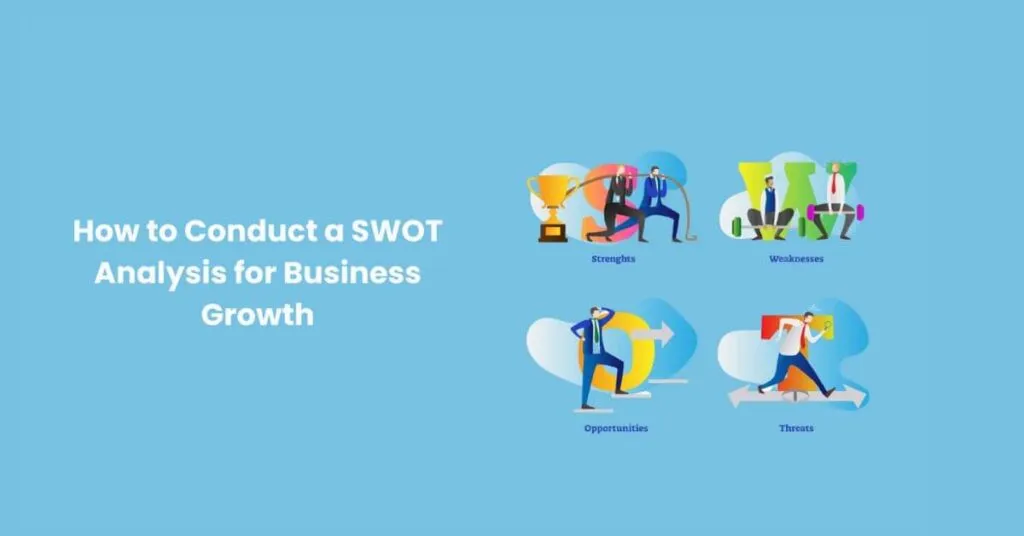How to Conduct a SWOT Analysis for Business Growth – Strategic planning and a thorough knowledge of your company’s strengths and limitations are crucial for remaining one step ahead of the competition in modern business. A SWOT analysis can be used in this situation. Learning the art of SWOT analysis is crucial whether you are a budding newcomer enrolling in a Business Analyst Course or an experienced Business Analyst hoping to hone your skills. Businesses may evaluate their internal and external factors thoroughly using this effective technique. In this blog, we will go in-depth on SWOT analyses and walk you through how to perform one successfully to promote your business growth.
Understanding SWOT Analysis
Strengths, Weaknesses, Opportunities, and Threats are what SWOT stands for. It is a systematic framework that aids organisations in assessing their existing situation and developing plans of action to meet their objectives. By recognising these four key components, you may learn a lot about your company’s internal strengths and potential external influences.
Let us break down each aspect of the SWOT analysis:
Strengths
For any modern organisation, its greatest assets are its internal qualities and resources, providing a competitive edge. These qualities and resources include a recognised brand name, skilled personnel, innovative technology, or effective procedures. You can leverage your advantages to grow and preserve your market share by recognising them. For instance, it might be viewed as a strength that draws students and increases enrolment if your Business Analyst course offers an industry-recognised credential.
Weaknesses
On the other hand, weaknesses are internal elements that prevent your company from growing or gaining a competitive edge. These might include out-of-date systems, subpar management, or insufficient training programs. Finding your flaws is essential for development and improvement. Recognising any knowledge or skill gaps as a Business Analyst is the first step toward professional growth.
Opportunities
Opportunities are outside forces that your company can take advantage of. Emerging markets, shifting consumer tastes, and technology improvements are a few examples. You may connect your tactics with current market trends by recognising opportunities. In order to take advantage of possibilities, Business Analysts must keep current with market trends and adapt to new tools and processes.
Threats
Threats are outside forces that may have a negative impact on your company. Economic downturns, heightened competition, or regulatory adjustments are a few examples. Identifying dangers enables you to create backup plans and efficiently reduce risks. Understanding the possible hazards to your projects or business may help you make wise decisions and manage risks proactively as a Business Analyst.
Steps to Conducting a SWOT Analysis for Business Growth
Now that you understand the components of SWOT analysis let us explore how to conduct one for your business growth:
- Gather Relevant Information: Begin by gathering data and information about your company. Financial reports, consumer reviews, staff surveys, and market research all fall under this category. Your SWOT analysis will be more accurate the more complete your data is.
- Brainstorm with Your Team: Participate in a brainstorming session with your team, including important stakeholders and staff members. This strategy guarantees a broader viewpoint and a more thorough study. This stage may need Business Analysts to have conversations with project teams or clients to pinpoint the strengths and shortcomings of a particular project.
- Identify Strengths and Weaknesses: Analyse the fundamental factors. What are your main strengths? What needs to be improved? Be truthful in your evaluation. This is the perfect opportunity to evaluate your knowledge gaps, experience, and skills as a Business Analyst.
- Identify Opportunities and Threats: Now concentrate on the outside variables. What market trends or changes may help or hurt your company? Analyse your market, your rivals, and the regulatory landscape. Consider how the expanding needs of your industry may affect your job chances, Business Analysts.
- Prioritise and Develop Strategies: Once you have a thorough inventory of your strengths, weaknesses, opportunities, and threats, prioritise them based on their significance and likelihood. You can develop practical strategies as a result. For instance, if you are a Business Analyst, you may prioritise upskilling in areas where you have found weaknesses or taking advantage of new trends in your industry.
- Implement and Monitor: Put your SWOT analysis’ recommended strategies into action and keep track of your development. Review your SWOT analysis frequently to adjust to shifting conditions and improve your tactics.
Conclusion
Any organisation may benefit from a well-done SWOT analysis, which is a fundamental skill for those aiming to become Business Analysts. You may make decisions that promote business success and help you advance in your profession by analysing your strengths, limitations, opportunities, and dangers. Always keep in mind that a SWOT analysis should be a continuous process that aids in your company’s adaptation to a market that is always changing. Start doing SWOT analyses now, whether you are a business owner or a Business Analyst, to clear the way for a more fruitful and profitable future.


